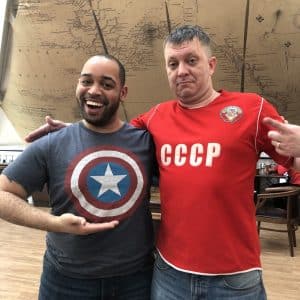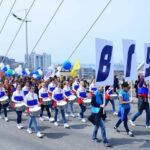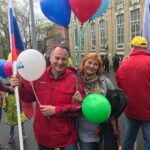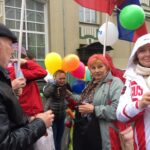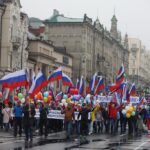Labor Day is celebrated in many countries of Eurasia every May 1st. Formerly International Worker’s Solidarity Day under the old Communist system, it seems that everyone calls this one something different now. “Labor Day,” “Worker’s Day,” and “Day of Spring and Labor” all seem to be used, often even in the same counrty, but everyone at least uses the same date. It is celebrated with parades, concerts, food, and drink and traditionally kicks off the dacha season. Many people take some extra time off around this holiday (often to combine it with Victory Day, another public holiday celebrated in early May), to “open” their dachas for the summer season.
This resource will serve to record what our students see in major Eurasian cities on this day to better understand how the holiday is celebrated in modern times.
Where did you go to experience the holiday? What did you see and what did you do there?
Morgan Henson (Vladivostok, 2019): Around 11am I called a taxi to the city center to see the parade. There was a lot of traffic toward the center and many streets were closed for the parade, so I got out of the car and began walking down the road to the main city square overlooking the Sea of Japan. There were many people outside waving flags that read «День Труда» and most people were gathered in their parade groups. Every university and many local businesses participated in the parade to show their pride for their region and their individual company/school. At the end of the parade, city officials spoke to the crowd about the importance of hard work and why each group should be proud.
What other events were held in the area? Were there other events to choose from either inside the city or outside?
Morgan Henson (Vladivostok, 2019): Directly after the parade and speech by city officials, there was a concert in the main square. Unfortunately, it was raining in Vladivostok on the day of the parade and many locals told me that there would normally be more people and more outdoor activities in the square, but I only saw a handful of separate events – mainly private picnics with the groups from the parade and political gatherings. The Communist Party of the Russian Federation was the group that endured the cold weather best and remained at their location until around 15:00.
Did you see any commercialization of this holiday?
Morgan Henson (Vladivostok, 2019): The parade was mentioned at the university on a number of occasions because students and members of the faculty were participating, but other than this there was not much publicity surrounding the holiday prior to the day of the event. At the event, however, there were flyers, balloons, and flags that were given to the parade participants as they walked around the city. But even these were freely handed out by the local government, so there was not much commercialization of the holiday.
Ask locals what they think of the holiday, what it means to them, and how they spend the day.
Morgan Henson (Vladivostok, 2019): Interviewing locals was an interesting experience. When people found out I was writing about the holiday, almost everyone said, “You should ask someone else, I won’t answer this well enough.” But eventually people felt comfortable enough to answer and the holiday has two main functions: First, the holiday symbolizes the beginning of spring and warm weather. Primorsky Krai can experience blizzards well into March and April, as I personally witnessed this semester. Usually, by День Труда, the cold season is ending and the warm weather is beginning to set in. Second, this holiday is seen as a “pre-celebration” for the День Победы celebrations on May 9. Most Primorye residents see День Труда as a nice reprieve from the regular work schedule, but the true “big” holiday is День Победы.


